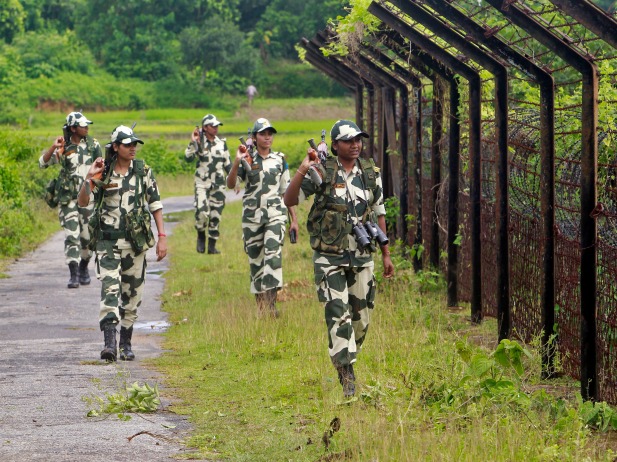TBS
Issues will be solved in further talks, ERD secretary hopes

Approvals of nine development projects with proposed Chinese loans worth $4.06 billion are being delayed as officials in Dhaka and Beijing could not agree on terms, particularly concerning currency choice and interest rates, according to Economic Relations Division (ERD) officials.
For the past two years, there has been a deadlock between the two sides over China’s proposal to shift its development loans from fixed-rate dollar-based terms to either market-based dollar interest rates or loans in yuan (RMB).
Officials expected at least one of the major loan deals would be reached before the current fiscal year ends on 30 June. But that has not happened so far as the 1 June Bangladesh and China Joint Economic Commission (JEC) meeting in Dhaka could not agree on the terms.
Among the most significant is the long-delayed “Supporting Infrastructure for Chinese Economic and Industrial Zone in Chattogram” project, designed to facilitate Chinese investors. The interim government has assigned top priority to this project and in April, the Bangladesh Economic Zones Authority submitted a revised investment proposal worth Tk4,065 crore to the Planning Commission.
The “Procurement of Six New Vessels” project with loan proposals of $250 million was also included in the borrowing programme for the outgoing fiscal year under the “highly probable” category. However, ERD officials now say no loans from China have materialised this year because of unresolved issues over loan conditions.
Apart from the push for a shift from fixed-rate to market-based rate for dollar loans, China now proposes to raise the yuan loan rate to 3-3.5% from 2% – a hike Dhaka considers too high, according to ERD officials.
In addition, they said, if market-based rate applies, interest on dollar loans from China could exceed 6% and turn unviable for Bangladesh.
ERD officials have argued that if China offers more loans in yuan, then interest rate should be within 1% and repayment period be extended to 30 years from 15 years now.
While the Chinese authorities are open to extending repayment terms for yuan loans, they remain unwilling to offer similar flexibility for dollar loans, they said.
Chief Adviser Muhammad Yunus’s visit to China in March and his meetings with President Xi Jinping and investors there, and a follow-up Dhaka visit of Chinese Commerce Minister Wang Wentao on 1 June leading a 150-member business delegation raised hopes that differences over the loan terms would be narrowed and at least one of the projects would make a headway. However, neither visit yielded any breakthrough, ERD officials said.
Between 2016 and 2023, Bangladesh signed loan agreements worth $7.92 billion with China for eight projects. As of 30 June 2024, disbursements from China total ¥17.5 billion and $7.25 billion, according to ERD data.
The last loan agreement was signed in May 2023 for the Rajshahi Wasa Surface Water Treatment Plant, involving $276.25 million. Since then, no new loan agreements have been finalised.
Officials warn that unless the deadlock is resolved soon, securing Chinese funding may remain challenging even in the next fiscal year.
Meanwhile, efforts for further negotiations are going on.
ERD Secretary Shahriar Kader Siddiky said discussions are underway at the working group level of the two countries on the terms and conditions of the Chinese loan.
“Currency of the Chinese Preferential Buyer’s Credit and the interest rate are expected to be resolved quickly at the working group level,” he said.
Zahid Hussain, former lead economist at the World Bank Dhaka office, said, “All bilateral loans have some limitations. However, if the decision is made based on a project-based analysis, a buyer’s/supplier’s credit loan from China can also be profitable.”
He said, “For some projects such as railways, roads or energy – where materials have to be imported from China – it may be economically reasonable to borrow in RMB from China at an interest rate of 3% or 3.5%.”
Zahid emphasised the necessity of conducting homework or analysis before taking up a project – “such as which country the materials will be purchased from, what the loan terms are, etc”.
“If the project requires purchasing goods from China, then a Chinese supplier’s credit can be a good option,” he said.
“It would not be right to refrain from Chinese loans solely on political or pre-emptive decisions. Decisions should be made based on the needs and economic rationale of a project. The type of financing should be determined not on the source of financing, but on the type and needs of the project.”
9 projects with $4b loan proposals awaiting approval
According to ERD sources, Chinese loans generally fall into two categories: Preferential Buyer’s Credit (PBC), typically offered in US dollars, and Government Concessional Loan (GCL), offered in yuan.
In late 2023, China’s Export-Import Bank proposed applying market-based interest rates for PBC in dollars. With the current Secured Overnight Financing Rate (SOFR) hovering around 4.2%, total borrowing costs – including fees – would exceed 6%, which Bangladesh considered unaffordable.
Currently, nine development projects with a combined proposed loan package of $4.06 billion from China are listed in the ERD’s borrowing programme. Apart from the top priority “Supporting Infrastructure for Chinese Economic and Industrial Zone in Chattogram” project, the list includes the expansion and modernisation of Mongla Port, enhancement of digital connectivity, nationwide expansion of Teletalk’s 4G network, and the construction of a sewerage collection system under the Dasherkandi STP catchment area in Dhaka.









